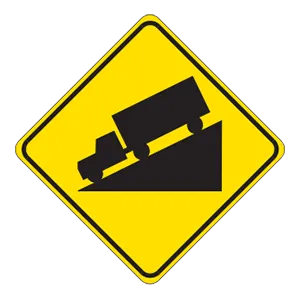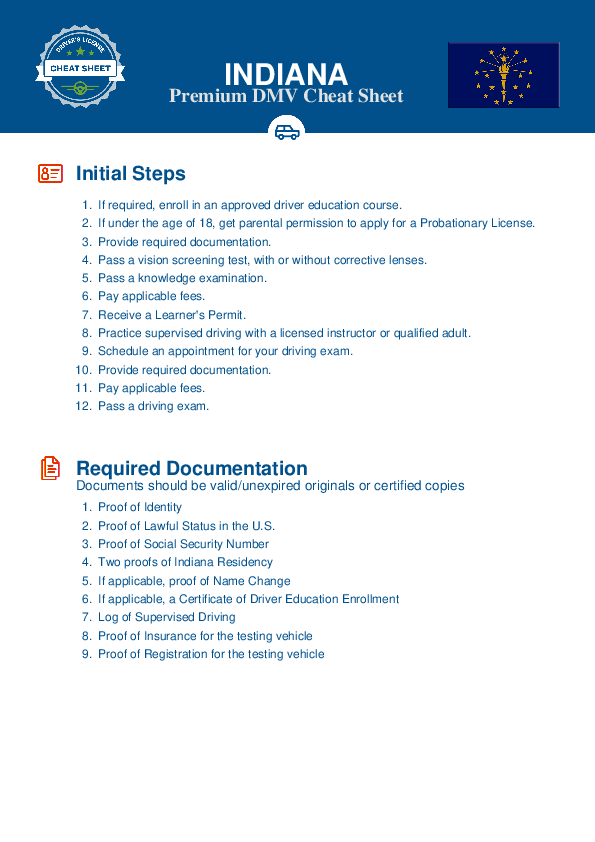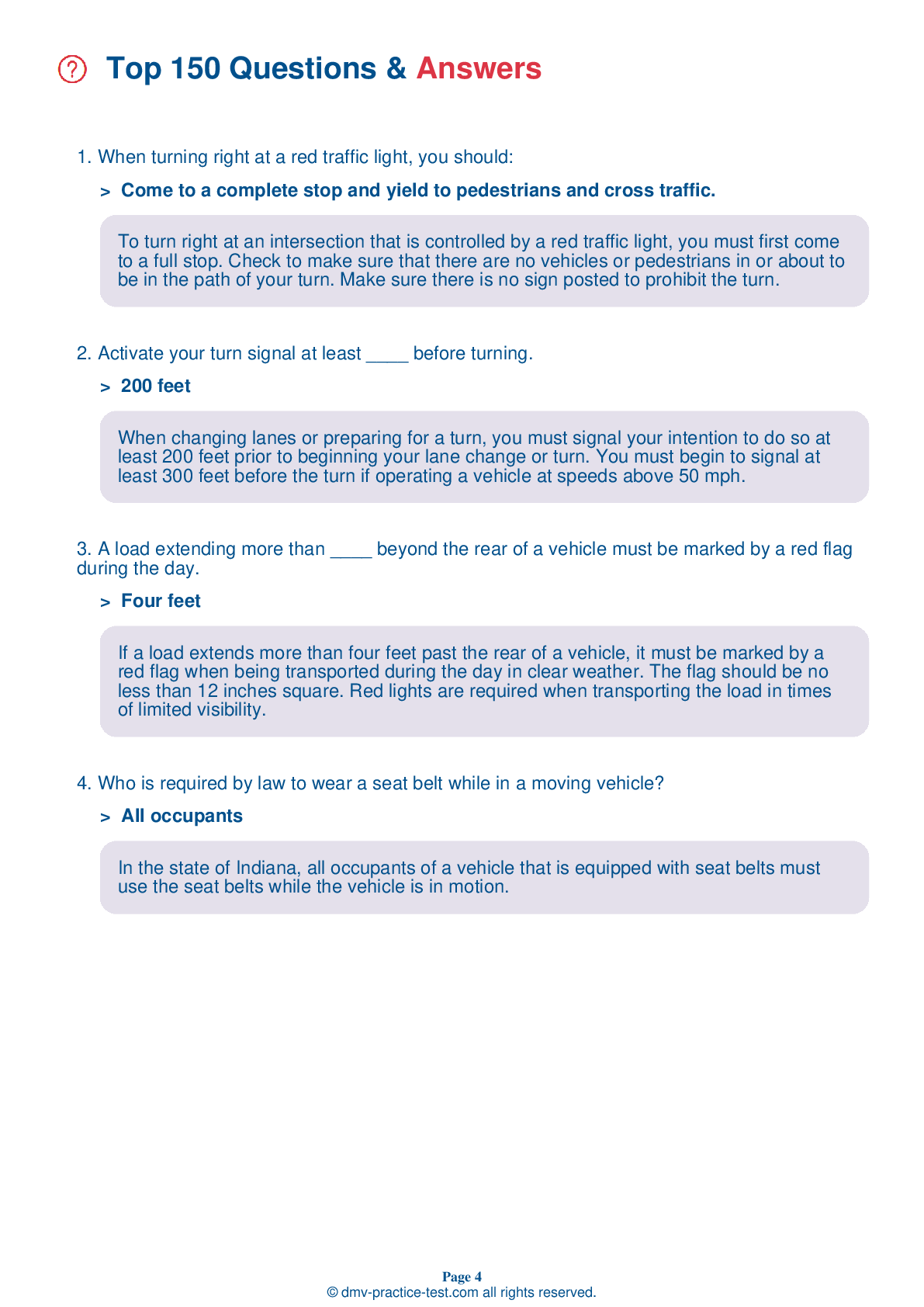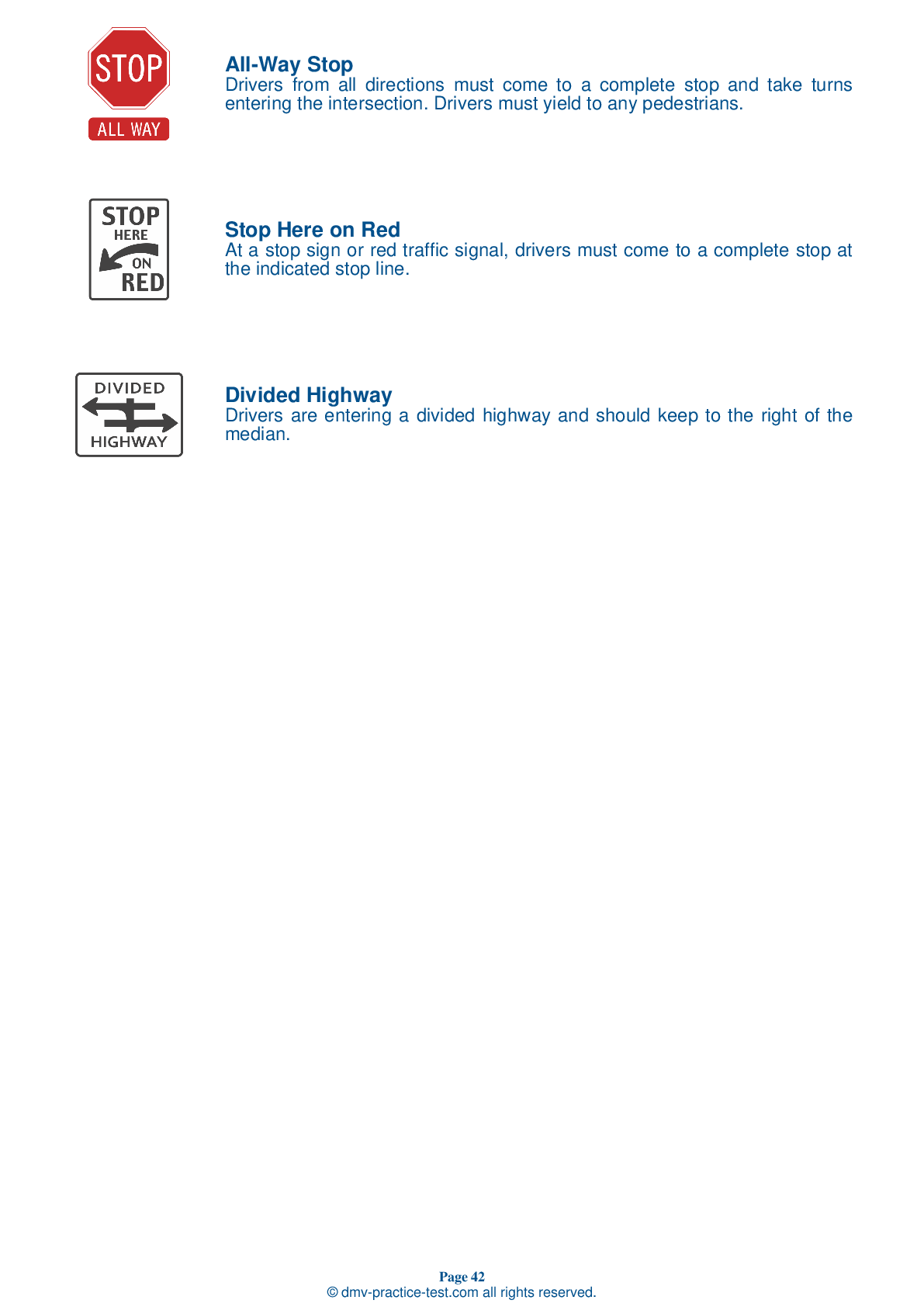FREE Indiana DMV Practice Test #1 Page 2 of 5
This set of Indiana DMV practise tests has been updated for January 2025. It includes questions based on the Indiana Driver Handbook's most significant traffic signals and laws for 2025. Use actual questions that are very similar (often identical!) to the DMV driving permit test and driver's licence exam to study for the DMV driving permit test and driver's licence exam.
On the practise exam, each question gets a tip and explanation to help you remember the concepts. The written component of the official Indiana DMV test will include questions about traffic rules, traffic signs, and driving statutes, as well as information from the Driver Handbook.
To obtain a passing grade, you must correctly answer 44 of the 50 questions. Take our DMV practise exam to help you prepare for your Indiana instruction permit or driver's licence.
The DMV exam is available in several languages.
Using any kind of testing assistance will result in an automatic fail, and the DMV may take additional action against your driver's licence, so stay away from it.
9 . Drivers who have consumed alcohol before getting behind the wheel:
Alcohol is a depressant that negatively affects judgment, vision, concentration, understanding of reality, and reaction time. It is never safe to consume alcohol in any amount before getting behind the wheel of a car.
10 . This sign means:

Warning signs prepare drivers for upcoming road conditions and hazards and are usually yellow with black markings. This sign warns drivers about an upcoming steep hill. They should adjust their speed accordingly to avoid brake damage or collision.
11 . This sign means:

Warning signs are used to warn drivers about upcoming hazardous conditions and are usually yellow with black markings. This sign tells drivers that they are approaching a school zone and that they should slow down and watch for children.
12 . An arrow painted on the pavement means:
An arrow painted on the pavement within a traffic lane indicates that drivers in the lane must make the movement indicated by the arrow. Drivers should follow directions given by any traffic signs or signals before proceeding in the direction indicated by the arrow.
13 . This sign means:

A regulatory sign displaying a red circle with a red slash through the middle indicates that a specific action is prohibited. Right turns are not permitted where this sign is posted.
14 . A flashing red signal means:
Like a stop sign, a red flashing light at an intersection means that you must come to a complete stop before entering the intersection. If you are facing a red flashing light at an intersection at which cross traffic is not required to stop, you may proceed only when the intersection is clear and when you will not interfere with the right-of-way of cross traffic.
15 . If you stop along the road at night:
If you stop along the road at night, turn on your emergency flashers and leave your low beam headlights turned on. Be sure that other road users will be able to clearly see your vehicle.
16 . The best way to avoid hydroplaning is to:
When roads are wet, cars take a longer distance to stop and may skid on quick turns. Do not use cruise control when driving under wet or icy conditions. Reduce your speed and drive with caution.
Need Car Insurance? No problem!
Compare the best rates in Indiana and find a personalized policy that meets your needs.
1. Are You Currently insured ?
2. Married ?
3. Do you own your Home?
4. Do you have more than 1 car ?
5. Have you or a Family Member Honorably Served in U.S. Military ?
6. Your Name
7. Age
8. Zip code
IMPORTANT REMINDER:Auto Insurance is Mandatory to drive in Indiana. Get covered before you hit the road to avoid any fines.
Ranked by best match



